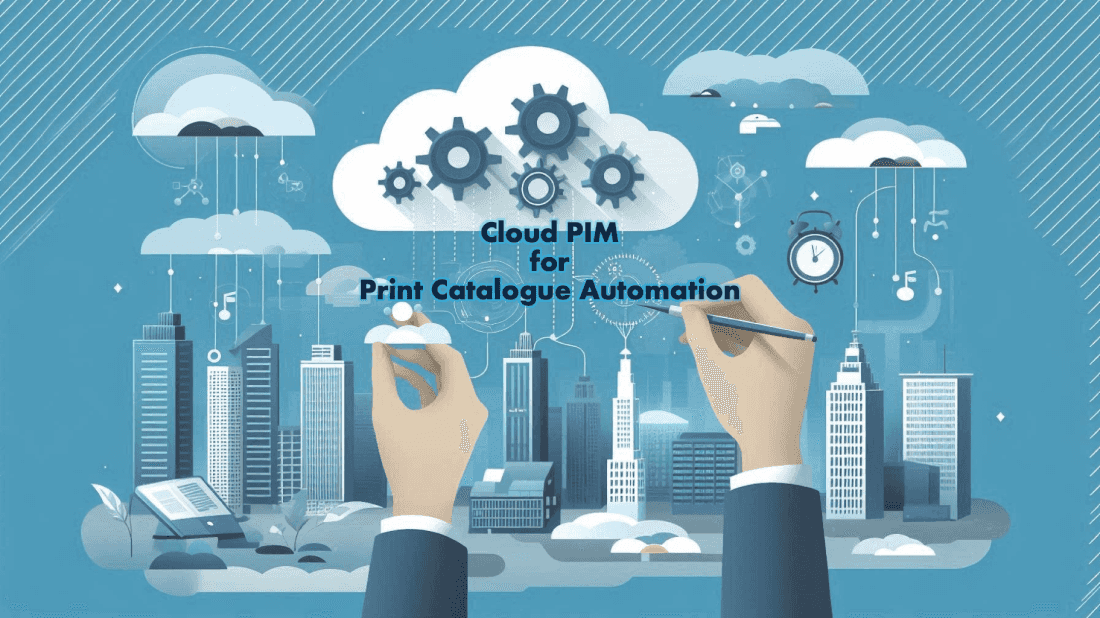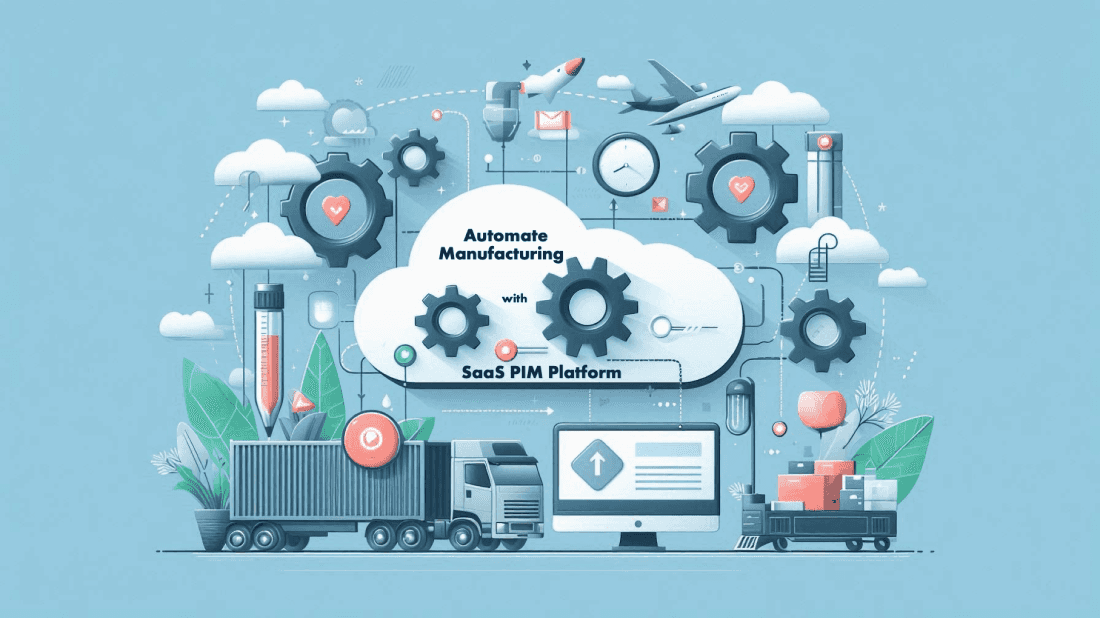Feb 20th, 2024
Why are DAM and PIM important as Content Management Solutions?
Categories:Product Information Management SystemDigital Asset Management SystemThe world is increasingly growing digitally, and the digital landscape is quite dynamic. For a business to succeed in such an environment content management is pivotal.
It shapes the brand’s identity, drives customer engagement, and assists business success. The past year has seen accelerated changes in content generation, with 85% of marketers recognizing the need for long-term transformation.
Brands must adapt to the domination of digital, fueled by faster internet, smartphones, and social media. This shift creates an “always-on” culture, demanding consistent and relevant content. Also, brands now engage with consumers across multiple touchpoints.
These interactions extend beyond transactions, they’re experiential, authentic, and value driven. Brand’s digital content serves as the bridge, allowing brands to communicate purposefully for all B2C and B2B firms.
Challenges of Content Management in the Digital Age
Organizations face several challenges while juggling between content, platforms, and their own products and services. Here are the vital digital content challenges for a manufacturer, e-commerce, or services firm:
- Consistency of Messages: With content spread across multiple platforms and channels, maintaining consistency and coherence becomes challenging.
- Content Volume: The sheer volume of content generated daily can overwhelm organizations, making it difficult to organize and manage effectively.
- Content Silos (Hidden Content): Different departments or teams often create and manage content in isolation, leading to fragmented workflows and duplication of efforts.
- Governance: Ensuring compliance with regulations, standards, and brand guidelines becomes complex as content proliferates.
- Version Control: Keeping content up-to-date and relevant to evolving audience needs requires constant monitoring and updating.
- Content Personalization: Tailoring content to individual user preferences and behaviors necessitates advanced analytics and segmentation capabilities.
- Security & Access: Protecting sensitive information and intellectual property from unauthorized access or breaches is a significant concern.
- Content Integration: Integrating content from various sources and systems into a unified platform for seamless access and management poses integration challenges.
OEMs and e-commerce businesses need additional layers of Digital Asset Management (DAM) and Product Information Management (PIM) to overcome these challenges. While digital publications can rely on CMS, OEMs and E-commerce portals need better content organization strategies for comfort.
What are DAM and PIM?
DAM and PIM solutions are two additional layers of data management solutions for OEMs and e-commerce portals. Product data managers can use these tools for optimizing content workflow and speeding up collaboration.
DAM Solutions
The Digital Asset Management system helps store, organize, categorize, retrieve, and share the brand’s various digital assets from a central repository.
Types of Digital Assets Managed by DAM
- Images and Photographs: DAM systems store a wide array of visual assets, encompassing images and photographs in various formats, such as JPEG, PNG, TIFF, or RAW files.
- Videos and Animations: DAMs support a wide range of common video formats such as MP4, MOV, and AVI.
- Design Files: These include raw design files created using software like Adobe Photoshop, Illustrator, or InDesign.
- Marketing Collateral: DAM manages marketing materials such as brochures, flyers, banners, and advertisements.
- Social Media Assets: Organize social media graphics, profile pictures, and cover images.
- Other File Types: Beyond the mentioned categories, DAM can handle documents, audio files, presentations, and more.
How DAM Works
- DAM offers a central repository to store digital assets, acting as a single source of truth.
- DAM creates or allows the addition of rich metatags for each type of content. These tags help identify relevant assets as per the searches by the internal and external team members.
- It ensures robust access rights and permissions, making it simple for organizations to organize, store, and distribute digital content.
- Unlike contemporary cloud solutions, DAM products provide superior capabilities in aspects like searchability, version control, security, access rights, and support.
In summary, DAM streamlines the management of digital assets, making them easily accessible, secure, and organized for efficient collaboration within organizations. DAM systems are extremely helpful to e-commerce and OEMs as they keep creating or updating new digital content rapidly.
DAM allows OEMs and e-commerce businesses to automate publishing content and save time.
PIM Systems
Product Information Management (PIM) is a crucial process for businesses dealing with extensive product portfolios. PIM solutions serve as a centralized system for compiling, storing, and distributing product data across various channels.
The primary goal of PIM is to create a consistent data hub that can be easily updated from different systems and shared instantly across channels. PIM processes also enable real-time evaluation, identification, and collaboration on product information.
Types of Product Information Managed by PIM
PIM software handles all the textual data that constitutes a product sheet. This includes:
- Marketing Descriptions: Captivating narratives that highlight a product’s features and benefits.
- Technical Information: Specifications, dimensions, and technical details.
- Labeling: Information required for compliance, safety, and legal purposes.
- Recipes: For food and beverage products, including ingredients and preparation instructions.
- Packaging Details: Dimensions, materials, and design.
- Cross-Selling and Up-Selling: Recommendations for related or complementary products.
In essence, PIM ensures that accurate, consistent, and up-to-date product information is readily available for marketing, sales, and customer-facing channels.
Benefits of DAM and PIM
Both digital and text assets are critical for the sales and marketing teams. Digital assets help the marketing channels engage the possible consumer base and ignite interest. Detailed and accurate product information helps turn interested prospects into confident consumers.
Here’s a snapshot of how DAM and PIM benefits fare against each other for a brand:
| DAM Benefits | PIM Benefits |
|---|---|
| DAM eliminates the chaos of scattered files, allowing marketers to focus on creativity rather than file management. | PIM transforms raw product data into compelling narratives, making it easier for customers to make informed purchasing decisions. |
| Improved brand consistency | Accurate product data |
| Time savings | Faster time-to-market |
| Enhanced collaboration | Improved customer experiences |
DAM vs. PIM: A Comparative Analysis
While both DAM and PIM are essential for businesses, their roles differ. DAM focuses on brand assets, and PIM dives deep into product data. The differences between DAM and PIM are listed below:
| Aspects | Digital Asset Management (DAM) | Product Information Management (PIM) |
|---|---|---|
| Purpose | Manages digital assets such as images, videos, documents, etc. | Manages product information such as descriptions, specifications, pricing, etc. |
| Primary Focus | Focuses on organizing, storing, retrieving, and sharing digital assets. | Focuses on organizing, enriching, and distributing product data across multiple channels. |
| Content Types | Handles various types of digital assets, including images, videos, documents, audio files, etc. | Primarily handles product-related data, including descriptions, attributes, classifications, etc. |
| Usage | Utilized by marketing, creative, and content teams to manage media assets for marketing campaigns, branding, and content creation. | Utilized by product managers, e-commerce teams, and retailers to manage product data for sales, merchandising, and catalog management. |
| Key Features | Metadata management, version control, digital rights management, asset categorization, search and retrieval functionalities. | Product data enrichment, taxonomy management, attribute management, channel-specific data formatting, and data syndication. |
| Integration | Integrates with content management systems (CMS), marketing automation platforms, creative tools, and e-commerce platforms. | Integrates with e-commerce platforms, ERP systems, CRM systems, and data analytics tools. |
| Target Audience | Marketing, creative, and content teams; digital asset managers; media and entertainment companies. | Product managers, e-commerce managers, merchandisers, retailers, and manufacturers. |
| Examples | Adobe Experience Manager, Widen Collective, Bynder. | Akeneo PIM, inRiver PIM, Salsify. |
Similarities Between DAM & PIM
DAM and PIM systems offer similar features and benefits, except for the assets on which they work. For example, DAM works with digital assets like media files, documents, NFTs, etc. Whereas PIM works with the information.
Thus, PIM can define, control, and update the information going into DAM inventory. Both systems complement the brand’s content management with:
- Central Repository: A central source of truth (Master Data), where DAM stores digital assets, and PIM stores the product attributes.
- Content Management: DAM and PIM both can assist in publishing and managing the content on the brand’s web pages, apps, social media, and marketing channels.
- Omni-Channel Experience: Both systems enable strong brand management with the latest information, and creative assets, that improve customer experience across all channels.
- ERP Integrations: Both platforms can be seamlessly integrated with the existing ERP systems of the organization.
- Smart Features: You can also layer DAM and PIM systems with artificial intelligence tools like ChatGPT 4, and DALLE, to enrich, customize, share, and manage your content. Additionally, data analytic tools help in comprehending and data-driven decisions.
Content Management Solution with ProductHub
Organizations can significantly improve their content and information flow using PIM and DAM solutions. PIM and DAM can enhance information and data efficiency for both internal and external teams.
For example, the marketing and pre-sale teams of the brand can engage and share the required product info with their channel partners.
ProductHub from Neurologik delivers a power pack of features combining both PIM and DAM solutions. ProductHub automates the brand’s content management for marketing as well as pre-sale teams and channel partners.
Here’s how ProductHub delivers a power-packed content management solution:
- Data Collection: ProductHub collects product information and digital assets from the existing databases of the ERP systems and data silos.
- Metadata and Taxonomies: The SaaS solution creates product attributes, Metadata tags, and taxonomies to ensure consistent labeling of all the assets.
- Centralized Content Management: All the data is then sorted into a centralized storage to maintain a single source of truth.
- Data Validation & Governance: Rules-based data validation improves the accuracy and authenticity of the added information like attributes and their relationships.
- Workflow Automation: ProductHub enables automation for regular workflows and adds the opportunity for user-driven service solutions.
- Address Global Markets: ProductHub empowers OEMs and E-commerce platforms to quickly convert their product data to address different markets.
- Channel Partner Comfort: Your channel partners can retrieve the product information they need in the formats they can use directly from the data pool you have made available to them.
- Website Content Management: You can create website-ready product catalogs, with top-level creatives and deep-diving product info. You can also publish a solution tool based on the selectors and configurators ProductHub creates for your product data.
Thus, Neurologik’s ProductHub is a complete product data workflow with combined features of MDM, DAM, PIM, CMS, and Product DB. You can integrate the platform with your existing ERP with APIs, and it will collect and enrich all product data for you. You can then focus on core marketing and pre-sale activities to engage and convert consumers or help channel partners with the same.
So, whether you’re a global corporation or a small e-commerce business, DAM and PIM are your allies in the content-driven digital era. Advanced SaaS platforms like ProductHub help you save time and resources by combining these functions under one roof.







